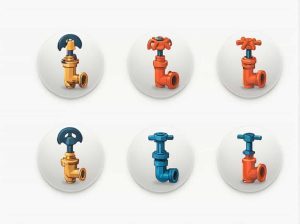The slenderness ratio is an important factor in structural engineering especially when analyzing the stability of columns and compression members. It helps determine whether a column will fail due to buckling rather than direct compression.
One of the key parameters in the slenderness ratio equation is K known as the effective length factor. Understanding what K represents how it is determined and its impact on structural stability is crucial for designing safe and efficient structures.
This topic explores the meaning of K in slenderness ratio how it is calculated and why it is essential in column design.
Understanding the Slenderness Ratio
Definition of Slenderness Ratio
The slenderness ratio (λ) is a dimensionless value that measures how prone a column is to buckling under axial load. It is given by the formula:
Where:
- K = Effective length factor
- L = Actual unsupported length of the column
- r = Radius of gyration of the cross-section
A higher slenderness ratio indicates a slender column that is more likely to buckle while a lower slenderness ratio means the column is more stable.
Role of K in Slenderness Ratio
The effective length factor (K) modifies the actual length (L) of the column based on end conditions which affect how the column resists buckling.
Here L_eff is the effective length which represents the actual buckling behavior rather than just the physical length.
What is the Effective Length Factor (K)?
Definition of K
K is a coefficient that adjusts the actual length of a column based on its support conditions. Different end restraints influence how much a column can bend and buckle under load.
Why is K Important?
- Accounts for different end conditions – Not all columns are supported the same way. Some have fixed ends while others are pinned or free.
- Determines critical buckling load – The value of K affects how soon a column will buckle under a given load.
- Helps in structural design – Engineers use K to calculate the safe load capacity of columns and prevent failure.
Values of K for Different End Conditions
The value of K varies depending on how a column is supported at its ends:
| End Condition | K Value | Description |
|---|---|---|
| Pinned-Pinned (Hinged at both ends) | 1.0 | Column can rotate freely at both ends typical in theoretical buckling problems. |
| Fixed-Free (Cantilever) | 2.0 | One end is fixed while the other end is free to move. Most unstable condition. |
| Fixed-Pinned | 0.7 | One end is fixed preventing rotation while the other is pinned allowing rotation. |
| Fixed-Fixed | 0.5 | Both ends are rigidly fixed preventing rotation making it the most stable condition. |
How K Affects Buckling Load
The Euler’s Buckling Formula helps determine the critical buckling load for a column:
Where:
- P_cr = Critical buckling load
- E = Modulus of elasticity
- I = Moment of inertia
- K = Effective length factor
- L = Actual column length
Since K appears in the denominator as (KL)² a higher K value results in a lower buckling load meaning the column will fail at a lower force.
Example: Comparing K Values
Let’s consider a column of length 3m with a radius of gyration (r) of 50mm:
-
Pinned-Pinned Condition (K = 1.0)
- Effective Length = (1.0 × 3m) = 3m
- Slenderness Ratio = 3000mm / 50mm = 60
-
Fixed-Free Condition (K = 2.0)
- Effective Length = (2.0 × 3m) = 6m
- Slenderness Ratio = 6000mm / 50mm = 120
The second column is twice as slender making it much more likely to buckle under load.
Practical Applications of K in Structural Design
1. Column Design in Buildings
Engineers use K values to design safe and efficient columns for high-rise buildings bridges and industrial structures. They choose lower K values (fixed ends) to improve stability and load capacity.
2. Steel vs. Concrete Columns
- Steel columns tend to have higher slenderness ratios because they are thinner and longer.
- Reinforced concrete columns generally have lower slenderness ratios due to their bulkier size and rigid connections.
3. Buckling Prevention Strategies
To prevent buckling engineers use:
✔ Bracing – Reduces the effective length (K) improving stability.
✔ Larger cross-sections – Increases radius of gyration (r) to lower slenderness ratio.
✔ Fixed supports – Reduce K value allowing higher load capacity.
Common Mistakes When Using K in Slenderness Ratio
1. Ignoring End Conditions
Using an incorrect K value can lead to unsafe designs causing columns to buckle under load.
2. Overlooking Effective Length
Some designers mistakenly use actual length (L) instead of KL leading to incorrect slenderness ratio calculations.
3. Not Considering Material Properties
Different materials react differently to buckling. Concrete and steel have different stiffness affecting how they handle slenderness.
The effective length factor (K) plays a crucial role in slenderness ratio calculations directly impacting a column’s buckling behavior and load-bearing capacity. By choosing the right K value based on support conditions engineers can design stronger safer and more efficient structures.
Understanding how K affects the slenderness ratio helps in accurate column design reducing the risk of buckling failures and ensuring structural stability in various engineering applications.



